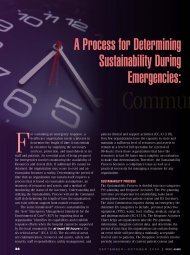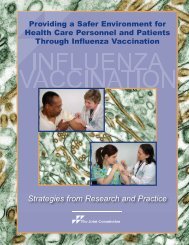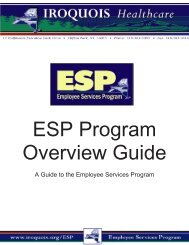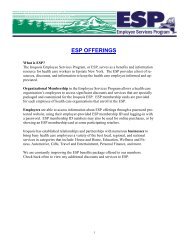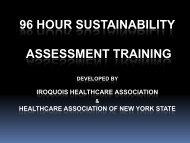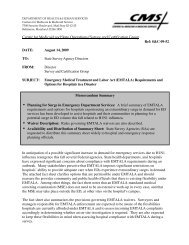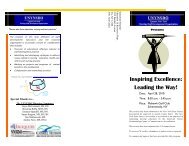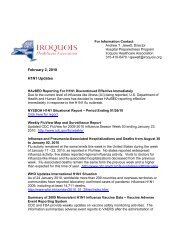NYS Public Health Legal Manual: A Guide for Judges, Attorneys ...
NYS Public Health Legal Manual: A Guide for Judges, Attorneys ...
NYS Public Health Legal Manual: A Guide for Judges, Attorneys ...
You also want an ePaper? Increase the reach of your titles
YUMPU automatically turns print PDFs into web optimized ePapers that Google loves.
NEW YORK STATE PUBLIC HEALTH LEGAL MANUAL § 1.46<br />
Commentary<br />
Requests <strong>for</strong> judicial orders seeking en<strong>for</strong>cement or review of involuntary<br />
confinement <strong>for</strong> communicable diseases can come either at<br />
the request of the local health officer—by seeking a court order pursuant<br />
to PHL § 2120 (or, in New York City, pursuant to <strong>Health</strong> Code<br />
[24 RCNY] § 11.23(f) [medical or other facility], (k) [home or place<br />
of person’s choice]); or at the request of the confined individual—by<br />
seeking a writ of habeas corpus or by bringing an Article 78 proceeding<br />
requesting review of an administrative order of confinement.<br />
Local health officers will seek a court order where they<br />
believe there will not be voluntary compliance with a health order;<br />
in many jurisdictions they will seek a court order as a matter of<br />
course without ever issuing a health order.<br />
The procedure contained in PHL § 2120 (applicable outside New<br />
York City) <strong>for</strong> obtaining a court order was enacted over a half-century<br />
ago. It requires a complaint by a local health officer to be<br />
brought be<strong>for</strong>e a “magistrate,” which by definition could include any<br />
judge in the State of New York, including justices of town and village<br />
courts that otherwise have no jurisdiction to grant such equitable<br />
relief. The only remedy that it provides is the commitment of the<br />
infected person to a “hospital or institution,” which, even if construed<br />
broadly to include a home health agency or local health<br />
department, still might not cover all confinements at home, which is<br />
a more likely result in the face of an epidemic. And it applies only to<br />
the person who is “afflicted with a communicable disease,” and<br />
there<strong>for</strong>e does not encompass quarantine of persons who are not<br />
infected but who have been exposed to the disease. A literal reading<br />
of section 2120 would impair the ability of local health officers to<br />
obtain court orders in epidemics directed to the broad needs of the<br />
health of the public, and in many cases would leave health officers to<br />
seek only criminal prosecutions under PHL § 12-b <strong>for</strong> violation of<br />
health orders.<br />
However, PHL § 2120 is not the only authority <strong>for</strong> obtaining judicial<br />
en<strong>for</strong>cement of isolation and quarantine. The power to isolate and<br />
quarantine in a health emergency is not ultimately dependent upon<br />
21




